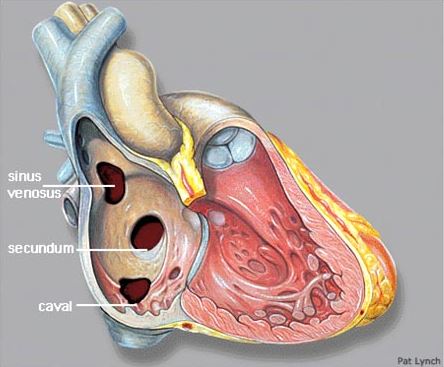 Atrial Septal Defect is a type of congenital heart disease, which means a person is born with it. People with ASD have an abnormal opening in the dividing wall between the upper filling chambers of the heart, or the atria. In most cases, ASDs can also diagnose and treated successfully with few or no complications.
Atrial Septal Defect is a type of congenital heart disease, which means a person is born with it. People with ASD have an abnormal opening in the dividing wall between the upper filling chambers of the heart, or the atria. In most cases, ASDs can also diagnose and treated successfully with few or no complications.
What Causes an Atrial Septal Defect?
ASDs occur during a baby’s development in the mother’s womb and are present at birth. Before birth, the heart develops from a large tube, dividing into sections that will eventually become its walls and chambers. If a problem occurs during this process, a hole in the wall that separates the left atrium from the right may result.
In some cases, the tendency to develop an ASD perhaps inherited, or genetic. For most people with an ASD, no one knows exactly why it happens.
Signs and Symptoms include
Appetite, Poor growth, fatigue and tiredness during activity, shortness of breath, lung problems and infections.
Diagnosis
- A chest X-ray, which produces a picture of the heart and surrounding organs.
- An electrocardiogram (EKG), which records the electrical activity of the heart.
- An echocardiogram (echo), which uses sound waves to create a picture of the heart.
Treatment
- Cardiac Catheterization: Doctors often use echocardiography or transesophageal echo as well as angiography to guide them in threading the catheter to the heart and closing the defect. Catheter procedures are much easier on patients than surgery because they involve only a needle puncture in the skin where the catheter is inserted. It means that recovery is faster and easier. The outlook for patients having this procedure is excellent.
- Surgical ASD closure: Surgical closure of an ASD involves opening up at least one atrium and closing the defect with a patch under direct visualization.
- Non-surgical (Percutaneous) ASD closure: Percutaneous closure of an ASD only indicated for the closure of Secundum ASDs with a sufficient rim of tissue around the septal defect so that the closure device does not impinge upon the SVC, IVC, or the tricuspid or mitral valves. The Amplatzer Septal Occluder (ASO) is commonly used to close ASDs.





